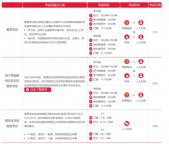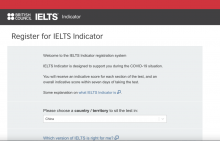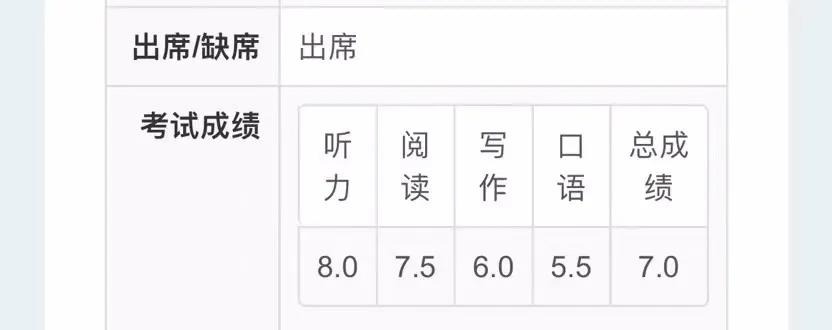【雅思精读】Why people fall for misinformation
雅思外刊阅读来啦!这期的文章选自 TED,BY JOSEPH ISAAC, SEP 2020,Why people fall for misinformation,“谎话跑得飞快,真相在后面蹒跚而行。”- 乔纳森·斯威夫特,下面和上名校小编一起来详细的阅读一下吧!
In 1901, David Hänig published a paper that forever changed our understanding of taste. His research led to what we know today as the taste map: an illustration that divides the tongue into four separate areas. According to this map, receptors at the tip of our tongues capturesweetness, bitterness is detected at the tongue’s base, and along the sides, receptors capture salty and sour sensations. Since its invention, the taste map has been published in textbooks and newspapers. The only problem with this map, is that it’s wrong. In fact, it’s not even an accurate representation of what Hänig originally discovered. The tongue map is a common misconception -- something widely believed but largely incorrect. So where do misconceptions like this come from, and what makes a fake fact so easy to believe?
1901 年,大卫·哈尼格 (David Hänig)发表的一篇论文永远地改变了我们对味觉的理解。从他的研究中诞生了我们现在所谓的“味觉图”:一张把舌头划分为 四个独立区域的示意图。根据这张示意图,舌尖的受体捕捉甜味,舌根检测苦味,舌头两侧的受体捕捉咸味和酸味。自发明以来,味觉图被陆续刊登在了各类教科书和报纸上 这张图唯一的问题是 — 它是错误的。事实上,它甚至没有准确地代表哈尼格原本的发现。味觉图是个常见的错误观念 — 虽然广为人信,却又在很大程度上不准确。像这样的错误观念是从哪来的?虚假信息又为什么能让人如此轻易地信以为真?
paper: 论文
illustration [.ɪlə'streɪʃ(ə)n] n. (书、杂志等中的) 插图;图示
divide ... into ... 把……分成……
receptor [rɪ'septər] n. 感受器;受体
capture v. 捕捉
detect v. 检测
common adj. 常见的
misconception n. 错误观念
widely believed: 广为人信
largely incorrect: 在很大程度上不准确
fake fact: 伪事实
It’s true that the tongue map’s journey begins with David Hänig. As part of his dissertation at Leipzig University, Hänig analyzed taste sensitivities across the tongue for the four basic flavors. Using sucrose for sweet, quinine sulfatefor bitter, hydrochloric acid for sour, and salt for salty, Hänig applied thesestimuli to compare differences in taste thresholds across a subject’s tongue. He hoped to better understand the physiological mechanisms that affected these four flavors, and his data suggested that sensitivity for each taste did in fact vary across the tongue. The maximum sensation for sweet was located at the tongue’s tip; bitter flavors were strongest at the back; salt was strongest in this area and sour at the middle of the tongue’s sides. But Hänig was careful to note that every sensation could also be tasted across the tongue, and that the areas he identified offered very small variations inintensity.
味觉图的旅程的确是从大卫 · 哈尼格开始的。他在莱比锡大学的学位论文中分析了舌头各部位对四种基本味道的敏感度。他用蔗糖测甜味,用硫酸奎宁测苦味,用盐酸测酸味,用盐测咸味。哈尼格用这些刺激来比较被试者舌头各处味觉阈值的差异。他希望能更好地理解影响这四种味觉的生理机制,而他的数据显示,舌头各部位对每种味道的敏感度确实存在差异。对甜味最敏感的是舌尖;对苦味最敏感的是舌根;咸味在这个区域最强,而酸味则在舌头两侧的中间。但是哈尼格谨慎地指出舌头的各个部位都能尝出所有的味道,而且他划分出的区域之间敏感度差异非常小。
dissertation [.dɪsər'teɪʃ(ə)n] n. 专题论文;学位论文
sensitives n. 敏感度
flavor n. 味道
sucrose ['su.kroʊs] n. 蔗糖
quinine ['kwaɪnaɪn] sulfate ['sʌl.feɪt] 硫酸奎宁
hydrochloric acid [ˌhaɪdrəˌklɒrɪk 'æsɪd] 盐酸
apply [ə'plaɪ] v. 使用
stimuli (stimulus的复数) [ˈstɪmjəˌlaɪ] n. 刺激
taste threshold 味觉阈值
physiological [.fɪziə'lɑdʒɪk(ə)l] adj. 生理的
mechanism ['mekə.nɪzəm] n. 机制
was located at: 位于
note v. 指出
identify v. 划分;区分
variation n. 变化;差异
intensity n. 强度
Like so many misconceptions, the tongue map represents a distortion of its original source, however, the nature of that distortion can vary. Some misconceptions are comprised of disinformation — false informationintentionally designed to mislead people. But many misconceptions, including the tongue map, center on misinformation— false or misleading information that results from unintentional inaccuracy.
跟其它很多错误观念一样,味觉图是对最初来源的一种曲解,然而这种曲解的性质可能存在差异。有些错误观念是由谣言组成的 — 刻意设计出来以误导人们的虚假信息。但包括味觉图在内的很多错误观念围绕的是错误信息 — 因无意的失实导致的错误或误导性信息。
distortion [dɪ'stɔrʃ(ə)n] n. 曲解
nature n.性质
vary v. 发生变化;产生差距
disinformation n. 虚假信息;谣言
intentionally adv. 有意;故意
mislead v. 误导
unintentional adj. 无意的
inaccuracy n. 误差;不准确的信息
Misinformation is most often shaped by mistakes and human error, but the specific mistakes that lead to a misconception can be surprisingly varied. In the case of the tongue map, Hänig’s dissertation was written in German, meaning the paper could only be understood by readers fluent in German and well versed in Hanig’s small corner of academia. This kicked off a game of telephone that re-shaped Häing’s research every time it was shared with outside parties. Less than a decade after his dissertation, newspapers were falsely insisting that experiments could prove sweetness was imperceptible on the back of the tongue.
最常见的错误信息是由差错和人为失误造成的,但是导致错误观念的具体错误多种多样。在味觉图的例子里,哈尼格的学位论文是用德语写的,意味着能真正读懂这篇文章的只有精通德语、且熟知哈尼格的学术细分领域的人。这就开启了一场传话游戏,每次和外行人士分享时,哈尼格的研究都会改头换面。他的学位论文发表后不到十年,报纸已经在错误地坚称,实验能够证明舌根完全感受不到甜味。
shaped by: 造成;受……影响
in the case of ...:在……的例子中
fluent in: (语言) 流利
well versed in: 深谙……;精通……
academia [.ækə'dimiə] n. 学术界
kick off: 开启;启动(活动)
a game of telephone 传话游戏(一传十十传百)
imperceptible [.ɪmpər'septəb(ə)l] adj. 细微的;(小得) 无法察觉的
The second culprit behind the tongue map’s spread were the images that Hänig’s work inspired. In 1912, a rough version of the map appeared in a newspaper article that cautiously described some of the mysteries behind taste and smell research. Featuring clear labels across the tongue, the article’sillustration simplified Hänig’s more-complicated originaldiagrams. Variations of this approachable image became repeatedly cited, often without credit or nuanced consideration for Hänig’s work. Eventually this image spread to textbooks and classrooms as a purportedtruth of how we experience taste.
导致味觉图广为流传的第二个罪魁祸首是被哈尼格的研究启发的图像。1912年,一张简略版的味觉图出现在了报纸上,报道小心翼翼地描述了味觉和嗅觉研究背后的一些奥秘。这篇报道的插图在舌头上标注了明确标签,简化了哈尼格更加复杂的原始图解。这幅平易近人的图像的变体被反复引用,但往往没有注明来源,也没有对哈尼格的研究有些微斟酌。最终,这幅图像传到了教科书和教室里,被当成我们如何体验味觉的真相。
culprit ['kʌlprɪt] n. 罪魁祸首
rough version 粗陋的版本;简略版
illustration [.ɪlə'streɪʃ(ə)n] n. 插图
diagram ['daɪə.ɡræm] n. 示意图;图解
variation [.veri'eɪʃ(ə)n] n. 变体;翻版
approchable [ə'proʊtʃəb(ə)l] adj. 易理解的
became repeatedly cited: 被反复引用
without credit 没注明来源
nuanced ['njuːɑːnst] adj. 细微的
nuanced consideration 细微斟酌
purported [pər'pɔrtəd] adj. 据称的;传言的
But perhaps the factor that most contributed to this misconception was itsnarrative simplicity. In many ways, the map complements our desire for clear stories about the world around us -- a quality not always present in the sometimes-messy fields of science. For example, even the number of tastes we have is more complicated than Hänig’s work suggests. Umami — also known as savory — is now considered the fifth basic taste, and many still debate the existence of tastes like fatty, alkaline, metallic, and water-like.
但也许对这个错误观念贡献最大的因素是它叙事的简单性。在很多方面,味觉图满足了我们对用明晰的故事讲述身边世界的渴望 — 然而这一特质在时而繁杂的科学领域中却时有缺失。举个例子,就算味觉的种类也比哈尼格所提到的复杂得多。旨味(umami)— 又称鲜味 — 如今被认为是第五种基本味道,还有很多人仍在辩论其他味道是否存在: 比如脂肪味、碱味、 金属味、水味等。
narrative ['nerətɪv] simplicity 叙述的简单性
complement ['kɑmplə.ment] v. 补充;满足
field of science 科学领域
umami [u:'mɑ:mi] n. (这个词源自日语) 鲜味
savory ['seɪvəri] n. 鲜味
fatty 脂肪的
alkaline [ˈælkəlaɪn] adj. 碱性的
metallic [me'tælɪk] 金属的
Once we hear a good story, it can be difficult to change how we see that information, even in the face of new evidence. So, next time you see a convenient chart or read a surprising anecdote, try to maintain a healthy skepticism — because misconceptions can leave a bitter taste on every part of your tongue.
一旦我们听到一个好故事, 想要改变看待它的方式是很难的 — 哪怕有新的证据摆在面前。所以下次看见一张简便图表, 或读了一个惊人轶事时, [ “狗没法向上看!”] 请试着保持一种健康的怀疑态度 — 因为错误观念会在你舌头上的每个角落留下一种苦涩的味道。
anecdote ['ænək.doʊt] n. 趣闻;轶事
in the face of 面临;面对;在……面前
maintain a healthy skepticism ['skeptɪ.sɪzəm] n. 保持健康的怀疑态度









